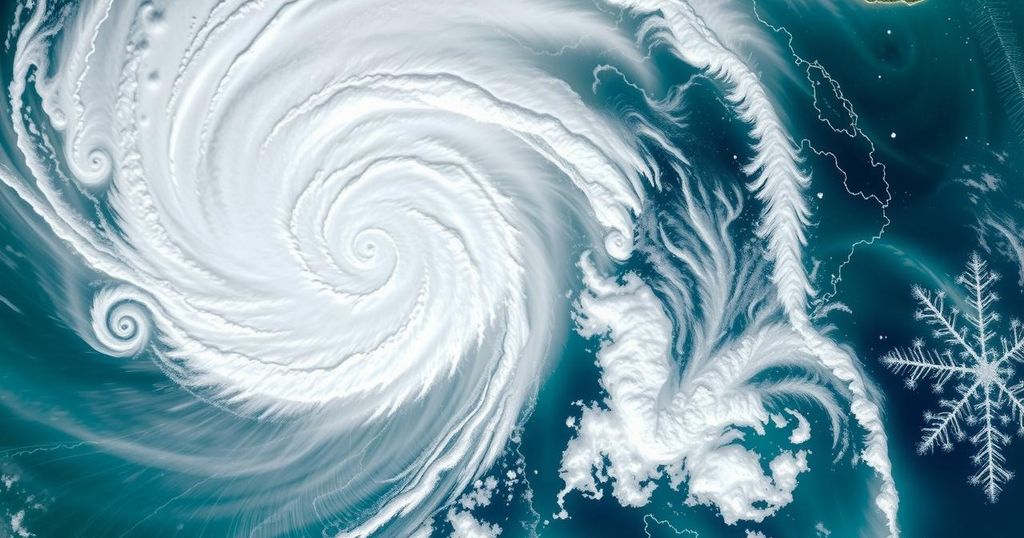Tropical Cyclone Dikeledi Devastates Madagascar and Mayotte, Causing Fatalities and Flooding

Tropical Cyclone Dikeledi, which recently struck Madagascar and Mayotte, has resulted in at least three fatalities and widespread flooding. Initially developing as a disturbance between Indonesia and Australia, it intensified into a tropical cyclone, making landfall on Madagascar before impacting Mayotte. Forecasts suggest it may re-strengthen as it tracks southward, potentially bringing further adverse weather to Mozambique.
Over the recent weekend, Tropical Cyclone Dikeledi posed a significant threat to the eastern regions of Africa. Initially a mild tropical disturbance between Indonesia and Australia on January 2, the system eventually intensified into a notable depression. Over the subsequent week, it transformed into a moderate tropical storm characterized by substantial rainfall and wind gusts surpassing 39 mph (63 km/h) in the central Indian Ocean, leading to its designation as Dikeledi. This cyclone reached its peak strength on January 10, with sustained wind speeds of 74 mph, categorizing it as a category 1 hurricane in the Atlantic region.
Dikeledi made landfall on Saturday along the northern coast of Madagascar, specifically between Vohemar and Antsiranana. The cyclone unleashed torrents of rain and fierce winds, resulting in the tragic loss of at least three lives. Following landfall, Dikeledi weakened to a tropical storm as it moved into the Mozambique Channel. As the system veered southward, it impacted Mayotte, bringing torrential rain that triggered flooding and mudslides, compounding the damage inflicted by Cyclone Chido in December. Emergency shelters were established, housing at least 14,500 individuals until conditions improved late on Monday.
Forecast models indicate that Dikeledi is expected to shift southward through the Mozambique Channel and may re-strengthen into a tropical cyclone early this week. Predictions suggest that the cyclone could evolve into an intense cyclone with wind speeds exceeding 100 mph by Wednesday and Thursday, as it continues its trajectory towards the southeast, skirting along the southern part of Madagascar. Concurrently, gusty winds associated with a separate weather phenomenon known as the Bora were reported around the Adriatic Sea, with gusts reaching up to 60 mph in some locations.
These occurrences underline the unpredictable and often severe nature of tropical cyclones and their consequent impact on vulnerable regions. The ongoing monitoring and response to Cyclone Dikeledi are crucial in mitigating further tragedies and ensuring the safety of affected populations.
Tropical cyclones are significant weather phenomena that develop over warm ocean waters when certain atmospheric conditions are met, such as low pressure and high humidity. The Indian Ocean region is particularly susceptible to these cyclones due to its climatic conditions, which can lead to rapid intensification and severe weather events. Cyclones can cause devastating impacts, including loss of life, destruction of property, and displacement of communities, particularly in island nations such as Madagascar and Mayotte.
In summary, Cyclone Dikeledi has had a profound impact on Madagascar and Mayotte, resulting in loss of life and significant flooding. As the system continues to evolve, forecasts indicate potential reintensification, raising concerns for further severe weather in the region. Continuous observation and timely response are imperative to protect affected communities and mitigate the consequences of such natural disasters.
Original Source: www.theguardian.com








